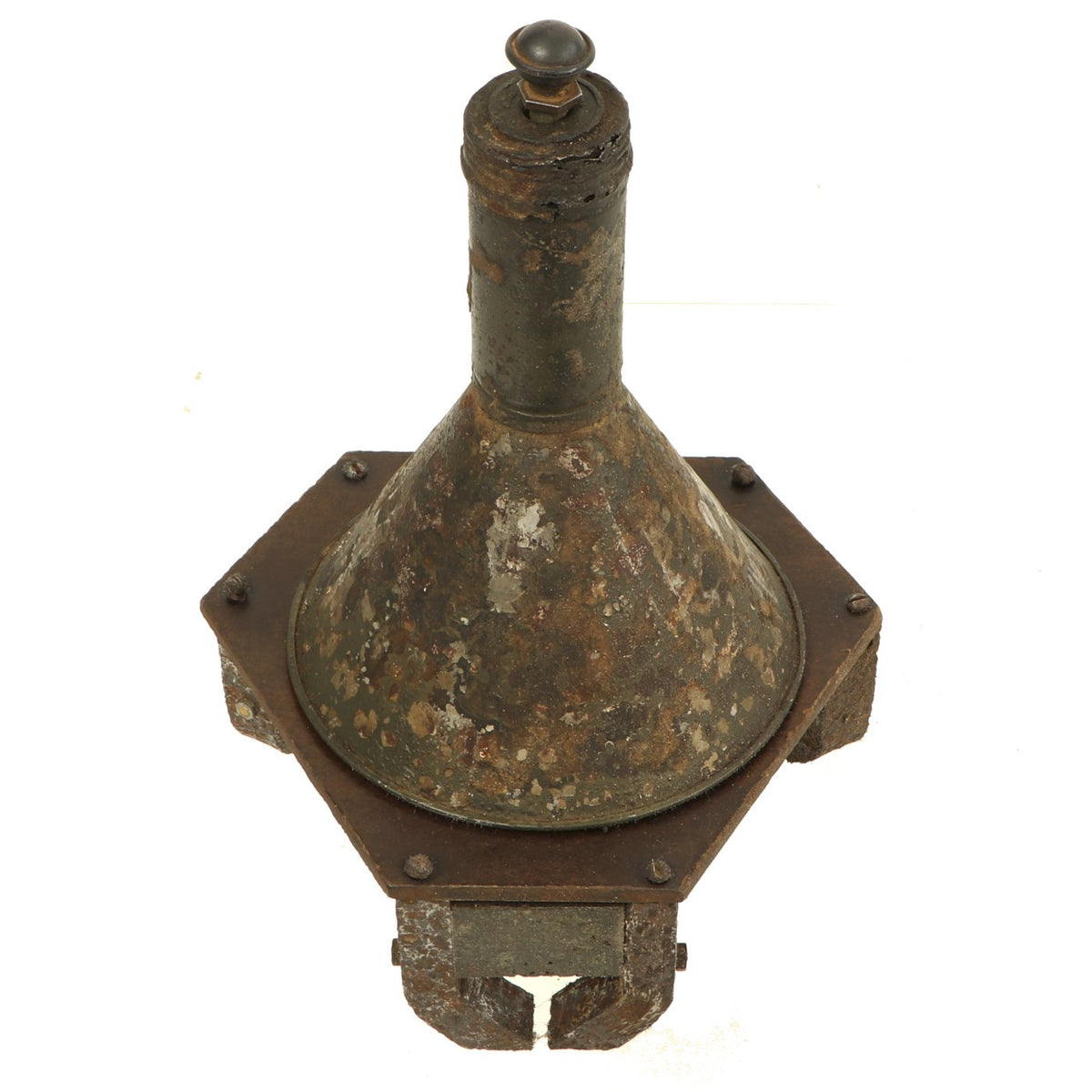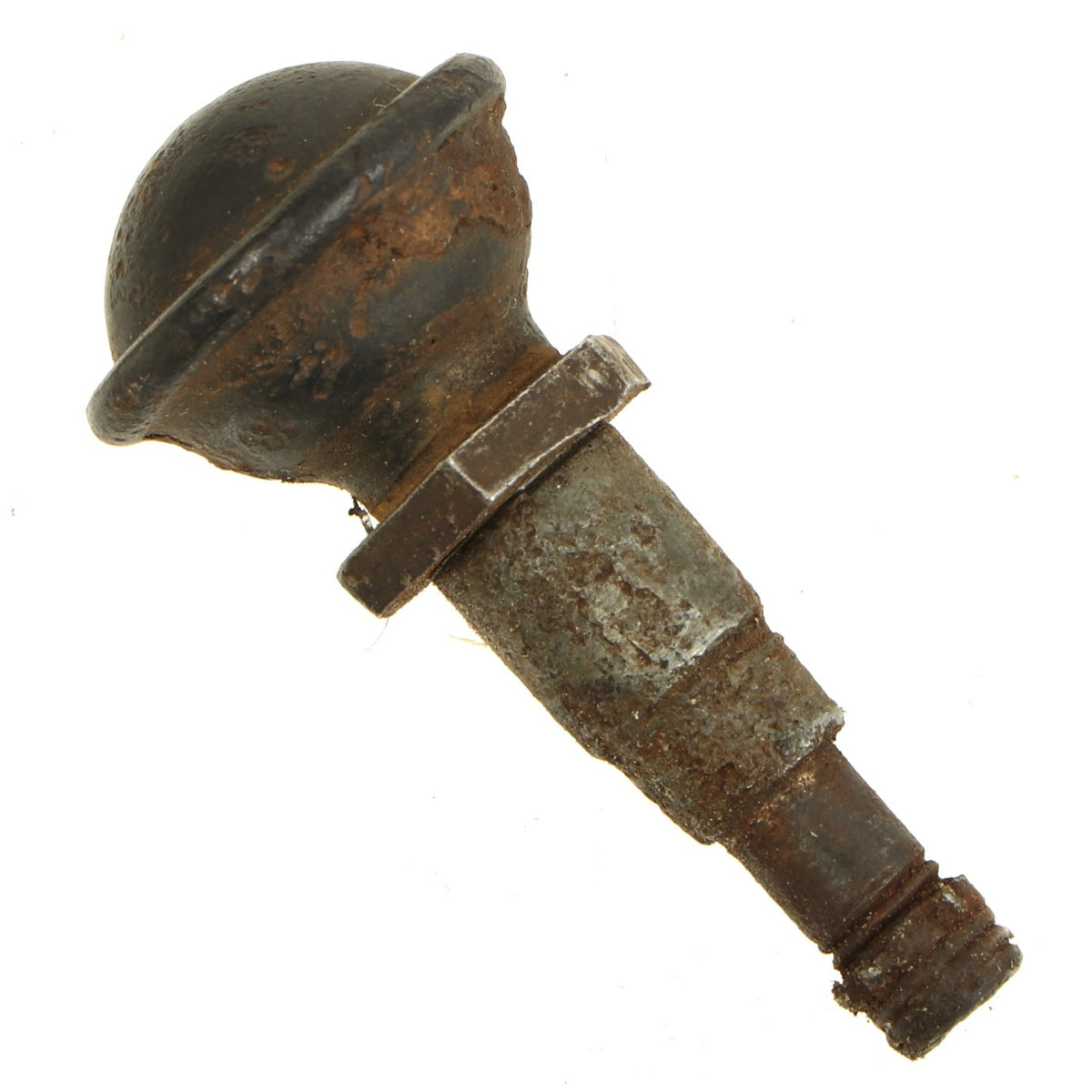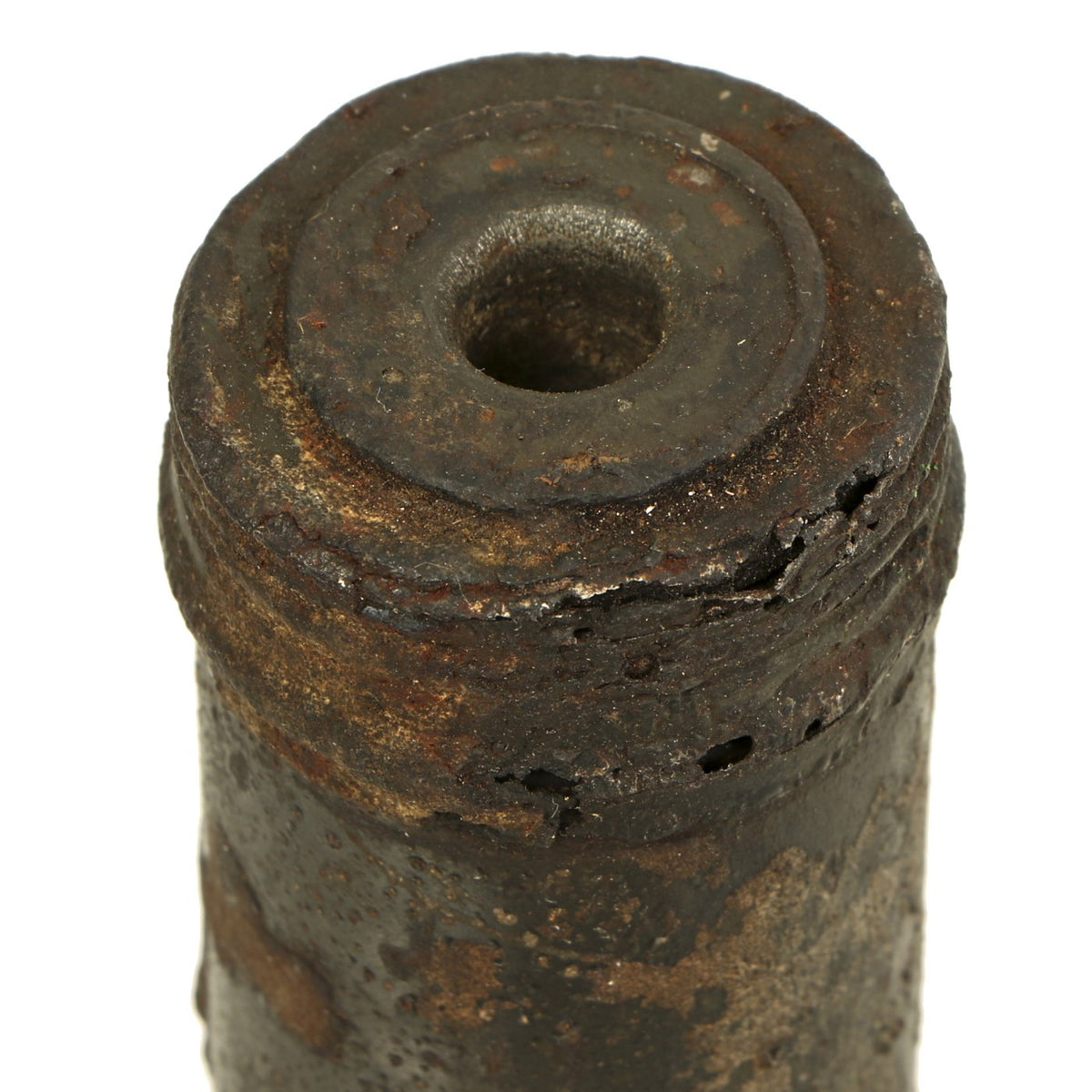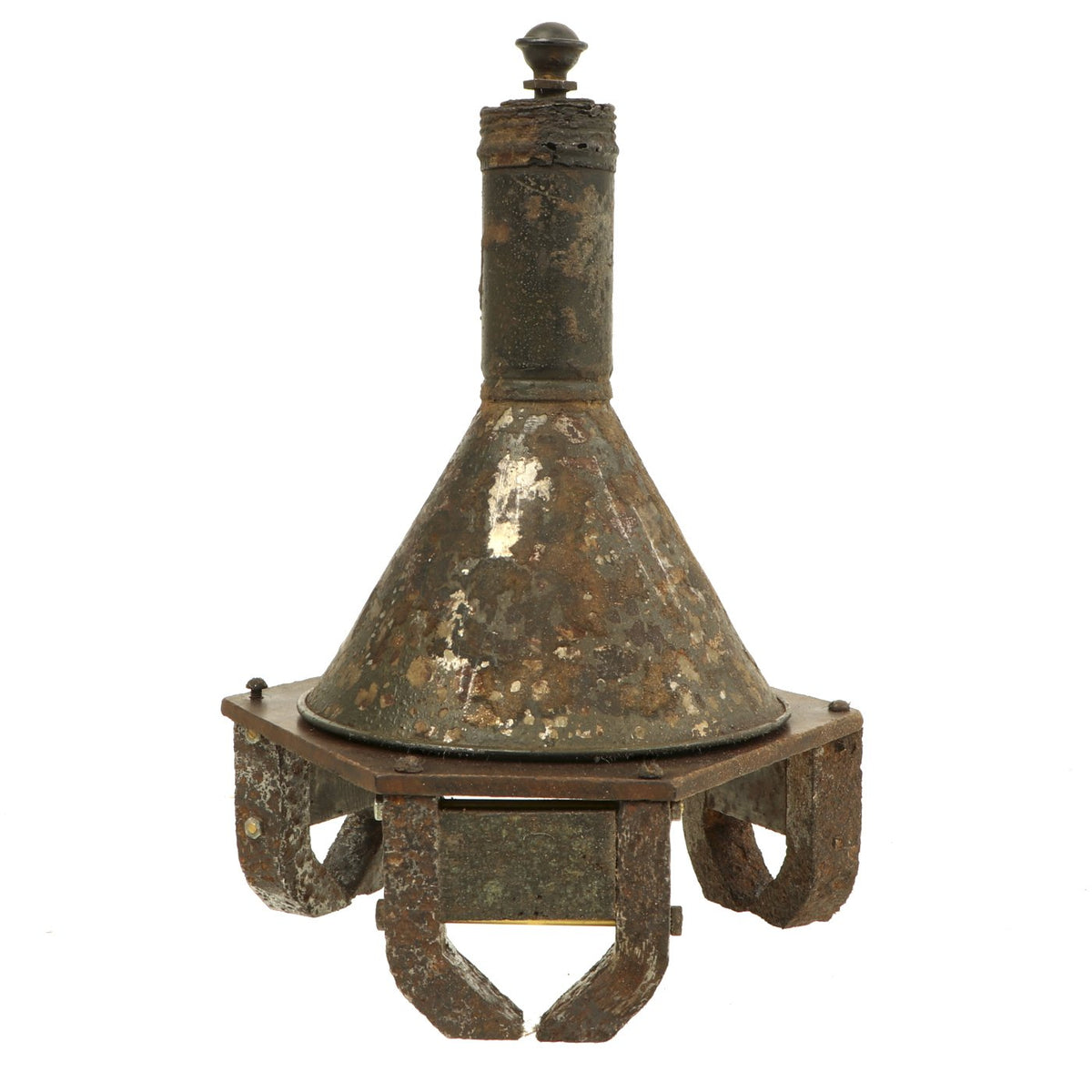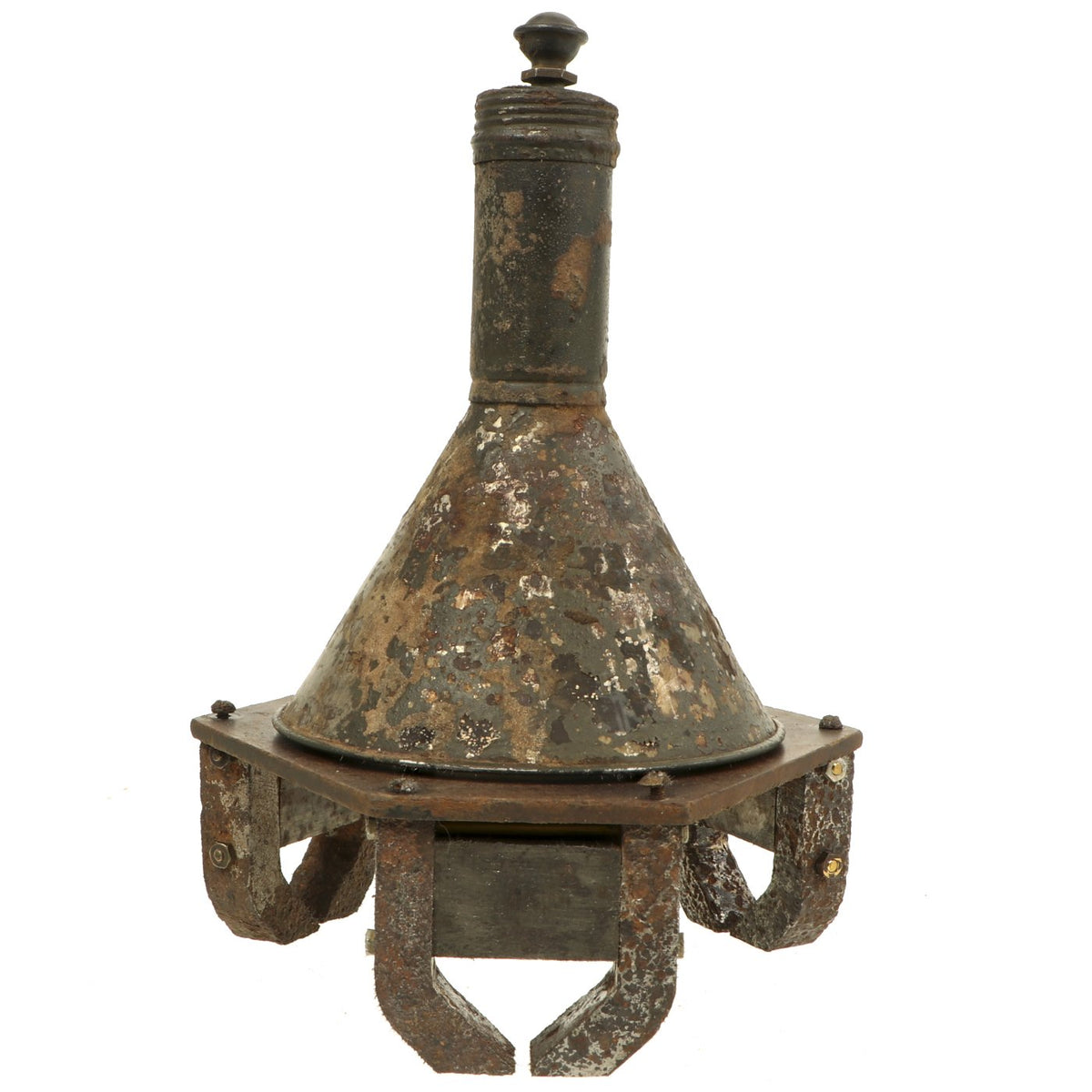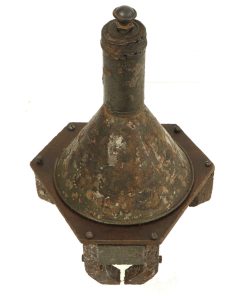Original German WWII Hafthohlladung Magnetic Panzerknacker Anti-Tank Bundle Original Items
$ 825,00 $ 206,25
Original Item: Only One Available. The Hafthohlladung, also known as the “Panzerknacker” (“Tank breaker”, German connotation “Safe cracker”) was a magnetically-adhered, shaped charge anti-tank grenade used by German forces in World War II, sometimes described as a mine.
This example, acquired from a private collector, is totally inert has been demilitarized according to specifications by the ATF. This example is in very good condition and still retains its fully functional magenets. Its has many areas of pitting but is solid and totally authentic. These are incredibly rare.
The Hafthohlladung (lit. adhesive hollow charge) was primarily used by Wehrmacht tank killer squads. Designed with three magnets at the base, each with a pair of poles creating a strong magnetic field across their gap, an infantryman could attach it to an enemy’s tank no matter the angle of the surface. As the blast axis should be flush and perpendicular to the plane of the armor at the point of placement, and armed by pulling the igniter on the rear of the mine, the degree of a tank’s sloped armor would be irrelevant for the device’s penetration. However this required direct placement made use of the device very dangerous, since the deploying infantryman placing it on an enemy fighting vehicle would be highly vulnerable to enemy fire.
The Hafthohlladung device was very effective against armour, able to penetrate 140 mm of Rolled Homogeneous Armour (RHA). The H3 (3 kilogram) and H3.5 (3.5 kilogram) models are easily distinguishable; the H3 is bottle-shaped and H3.5 is conical.
Specifications
– Weight: 3 kg (H3 version) or 3.5 kg (H3.5 version)
– First issued: November 1942
– Penetration: At 0°, 140mm of RHA or 508 mm (20″) of concrete
– Fuse: Friction ignited, 4.5 second delay, later 7.5 seconds in May 1943
– Number produced: 553,900
– Declared obsolete in May 1944 in favor of the Panzerfaust, but remaining stockpiles used until exhausted
Fast Shipping with Professional Packaging
Thanks to our longstanding association with UPS FedEx DHL, and other major international carriers, we are able to provide a range of shipping options. Our warehouse staff is expertly trained and will wrap your products according to our exact and precise specifications. Prior to shipping, your goods will be thoroughly examined and securely secured. We ship to thousands clients each day across multiple countries. This shows how we're dedicated to be the largest retailer on the internet. Warehouses and distribution centres can be located throughout Europe as well as the USA.
Note: Orders with more than one item will be assigned a processing date depending on the item.
Before shipping before shipping, we'll conduct a thorough inspection of the items you have ordered. Today, the majority of orders will be delivered within 48 hours. The delivery time will be between 3-7 days.
Returns
The stock is dynamic and we cannot completely manage it because multiple stakeholders are involved, including our factory and warehouse. So the actual stock may alter at any time. It's possible that you may not receive your order once the order has been made.
Our policy is valid for a period of 30 days. If you don't receive the product within 30 days, we are not able to issue a refund or an exchange.
You can only return an item if it is unused and in the same state as the day you received it. You must have the item in its original packaging.
Related products
Uncategorized
Uncategorized
Uncategorized
Uncategorized
Uncategorized
Uncategorized
Band of Brothers ORIGINAL GERMAN WWII Le. F.H. 18 10.5cm ARTILLERY PIECE Original Items
Uncategorized
Angolan Rebel 1970s era 60mm Inert Display Mortar from Angolan Civil War Original Items
Uncategorized
Armored Burgonet Helmet & Polearm from Scottish Castle Leith Hall Circa 1700 Original Items
Uncategorized
Uncategorized
Uncategorized
Uncategorized
Uncategorized
Uncategorized
Uncategorized
Uncategorized
Uncategorized
Uncategorized
Uncategorized
Australian WWII Owen MK1 Machine Carbine SMG Custom Fabricated Replica with Sling Original Items
